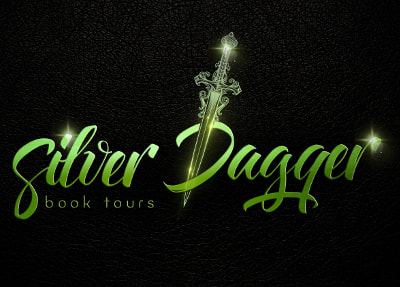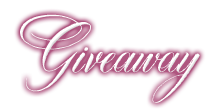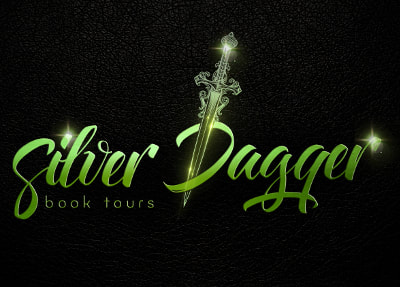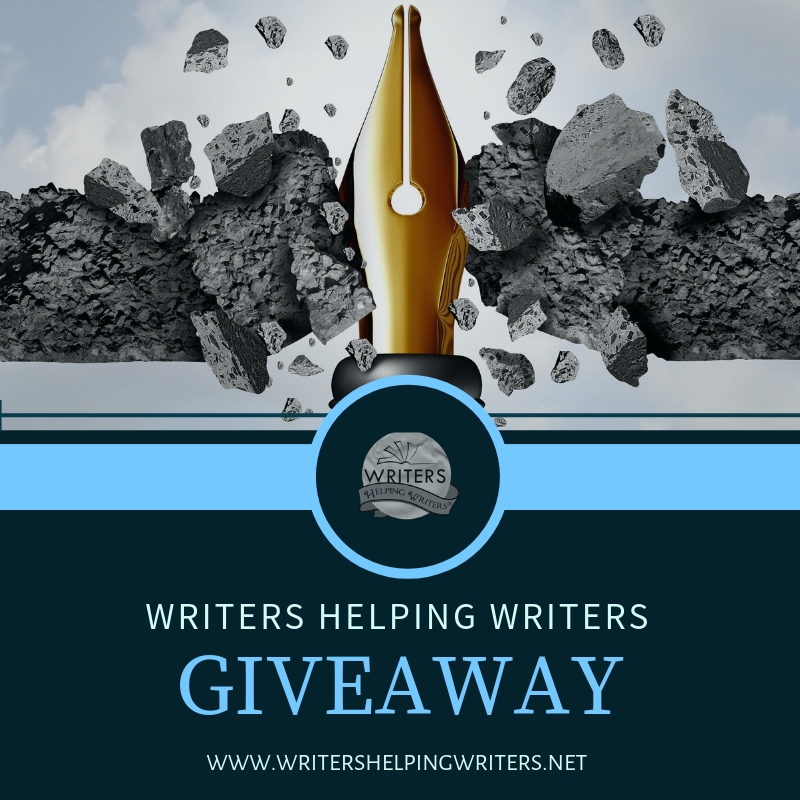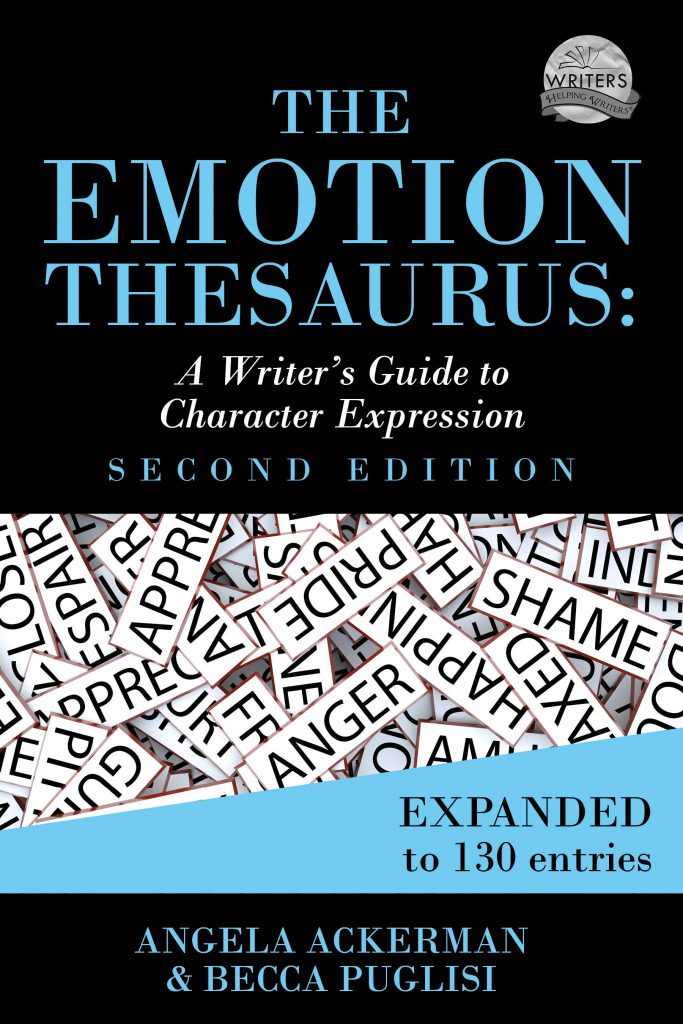Today’s a big day – The Emotion Amplifier Thesaurus: A Writer’s Guide to Character Stress and Volatility has just released. As part of the Street Team, I’m helping to get the word out about a HUGE giveaway the two authors are running to celebrate!
The Emotion Amplifier Thesaurus is a companion to the popular Emotion Thesaurus. It covers all the ways to push a character emotionally, setting them up for BIGGER reactions.

Emotion Amplifiers are specific states and conditions that can strain a character to the point they lose control. Pain, exhaustion, and competition are just some of the amplifiers that can send your character over the edge. If they give in to what they feel, they might lash out, take foolish risks, show poor judgment, or act in ways that take their situation from bad to worse. Hello, conflict!
Win a Free Workshop!
Amplifiers can bring a character’s emotions to the surface for readers to see, which is exactly what we need to happen. But that’s not all they do. Becca and Angela can’t wait to dive into how they can power a story and are celebrating this release with a very special Zoom workshop.
Seats are Up for Grabs!
If you’ve ever attended a workshop by Angela and Becca, you know you’ll learn a ton. Head over here to enter the giveaway, but hurry – the last day to enter is May 17th, 2024.
Good luck!

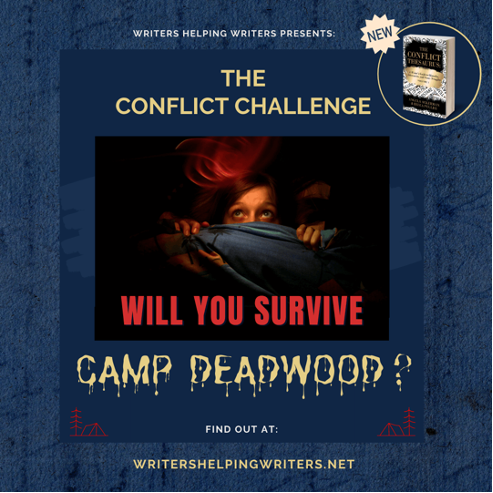
I don’t know about you, but I get a little excited when a new writing guide comes along. Today I get to spill the news that The Conflict Thesaurus: A Writer’s Guide to Obstacles, Adversaries, and Inner Struggles (Vol. 1) has hit the shelves.
This guide is about that killer ingredient our stories need: Conflict. It shows you exactly how to use conflict to raise tension, create a fresh story premise, and pull readers in. The guide also dives into over 100 conflict scenarios and how each can be endlessly adapted to challenge a character inside and out. Problems, Moral Dilemmas, Ticking Clocks, Obstacles, No-Win Scenarios…this book is plot brainstorming in overdrive!
I’m part of Angela & Becca’s Street Team for this release, and we have an important question to ask you:
Can You Survive Danger as Well as Your Favorite Protagonist?
Sure, it’s easy for you to use conflict to torture your characters and make them struggle, but what if it’s you in the hot seat instead? Will you make good decisions, or bad ones?
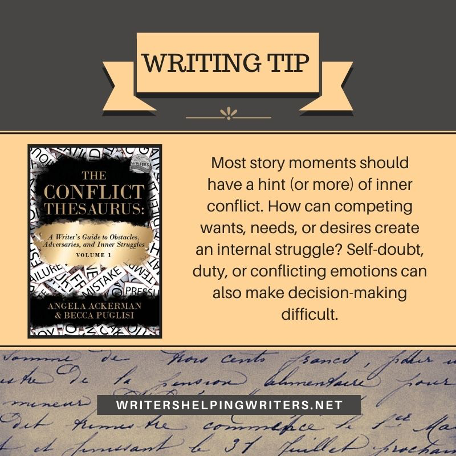
It’s time to find out by taking the Conflict Challenge! I dare you to become the protagonist in a special story Angela & Becca have created. And heads up, if you survive, you win some pretty cool stuff!
GIVEAWAY ALERT
While you’re at Writers Helping Writers taking the Conflict Challenge, make sure to enter The Conflict Thesaurus celebratory giveaway, too. But hurry – it’s only on for a few days.
So, take the challenge…if you dare. And don’t forget to come back and let me know how you did against Camp Deadwood!
I want to recommend a helpful resource for authors! Read to the bottom for my review of K.M. Weiland’s new book. First, here’s the cover and her Amazon description:
Theme Is What Your Story Is Really About
Theme—the mysterious cousin of plot and character. Too often viewed as abstract rather than actionable, theme is frequently misunderstood and left to chance. Some writers even insist theme should not be purposefully implemented. This is unfortunate, because in many ways theme is story. Theme is the heart, the meaning, the point. Nothing that important should be overlooked.
Powerful themes are never incidental. They emerge from the conjunction of strong plots and resonant character arcs. This means you can learn to plan and implement theme. In doing so, you will deepen your ability to write not only stories that entertain, but also stories that stay with readers long after the end.
Writing Your Story’s Theme will teach you:
- How to create theme from plot and character.
- Why every supporting character and subplot should enhance the theme.
- How to prevent theme from seeming preachy or “on the nose.”
- What to consider in identifying the best theme for any given story.
- And much more!
Conscious mastery of theme will elevate every story you write and allow you to craft fiction of depth and meaning.
Take Control of Your Story Via a Powerful Implementation of Theme
My Review:
This is a useful resource for any author wanting to strengthen their novel’s theme. I’ve never read anything so in-depth on the subject! But don’t try to read this book when you’re tired or at less than peak mental alertness – it’s so deep and rich that takes a lot of brainpower to fully absorb the details. There are so many useful concepts here that I found myself highlighting dozens of separate passages, which I’ll have to look back over when I’m plotting out my next book. Thank you, K.M. Weiland, for another excellent writing resource!
Click here to buy Writing Your Story’s Theme from Amazon.
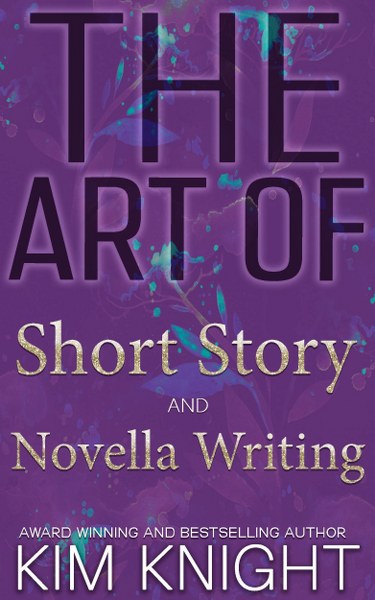 Compared to novel writing, short stories and novellas need special and different skills that every writer should master. Readers love shorter stories! From Kim Knight, the award-winning and number #1 best-selling author of 365 Days of Writing Prompts for Romance writers, The Art of Short Story and Novella Writing writer’s reference is perfect for both seasoned and aspiring writers of all genres. The Art of Short Story and Novella Writing will help you perfect, sharpen, and increase your skills and abilities when writing engaging shorter stories, novellas, or novelettes for both stand-alone and series stories. With detailed and practical steps, the sole aim of this guide is to help writers confidently write within a high demand and well-paid market. With easy-to-engage-with chapters, discover the practical art of short story and novella writing. The Art of Short Story and Novella Writing includes practical exercises to help you master the skills to write your next series of stories:
Compared to novel writing, short stories and novellas need special and different skills that every writer should master. Readers love shorter stories! From Kim Knight, the award-winning and number #1 best-selling author of 365 Days of Writing Prompts for Romance writers, The Art of Short Story and Novella Writing writer’s reference is perfect for both seasoned and aspiring writers of all genres. The Art of Short Story and Novella Writing will help you perfect, sharpen, and increase your skills and abilities when writing engaging shorter stories, novellas, or novelettes for both stand-alone and series stories. With detailed and practical steps, the sole aim of this guide is to help writers confidently write within a high demand and well-paid market. With easy-to-engage-with chapters, discover the practical art of short story and novella writing. The Art of Short Story and Novella Writing includes practical exercises to help you master the skills to write your next series of stories: Some of you may know Angela Ackerman and Becca Puglisi of Writers Helping Writers. Well, today they are releasing a new book, and I’m part of their street team. I’m handing the blog over to them today so they can tell you a bit about their Writer’s Showcase event, new book, and a great freebie to check out. Read on!
Certain details can reveal a lot about a character, such as their goals, desires, and backstory wounds. But did you know there’s another detail that can tie your character’s arc to the plot, provide intense, multi-layered conflict, AND shorten the “get to know the character” curve for readers?
It’s true. Your character’s occupation is a GOLD MINE of storytelling potential.

Think about it: how much time do you spend on the job? Does it fulfill you or frustrate you? Can you separate work from home? Is it causing you challenges, creating obstacles, or helping you live your truth?
Just like us, most characters will have a job, and the work they do will impact their life. The ups and downs can serve us well in the story.
Maybe you haven’t thought much about jobs in the past and how they act as a window into your character’s personality, interests, and skills. It’s okay, you aren’t alone. The good news is that The Occupation Thesaurus: A Writer’s Guide to Jobs, Vocations, and Careers is going to do all the heavy lifting for you. (Here’s one of the job profiles we cover in this book: FIREFIGHTER.)
My Review of The Occupation Thesaurus:
I found this to be a really useful resource. I anticipate using it for every book I write from now on, to make sure I pick the right occupation for each character and describe the details of their job well. I definitely recommend the Occupation Thesaurus – it would be a great addition to any author’s toolbelt. It might even be useful for someone researching a new possible career for themselves!
GIVEAWAY ALERT: THE WRITER’S SHOWCASE
To celebrate the release of a new book, Writers Helping Writers has a giveaway happening July 20th & July 23rd. You can win some great prizes, including gift certificates that can be spent on writing services within our Writer’s Showcase. Stop by to enter!
Resource Alert: A List of Additional Jobs Profiles For Your Characters

Some of the amazing writers in our community have put together additional career profiles for you, based on jobs they have done in the past.
What a great way to get accurate information so you can better describe the roles and responsibilities that go with a specific job, right?
To access this list, GO HERE.
Happy writing to all!
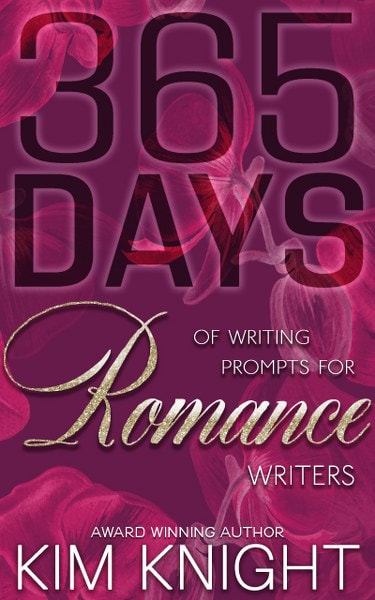 With 365 Days Of Writing Prompts for Romance Writers, there’s no need for additional notepads or places to store your ideas. For each day of the year there’s a dedicated space for plotting your ideas, with a writing prompt to create an outline for a romance short story, novella, novel or even flash fiction. All you need to do is adapt the characters or setting to your sub-genre of romance. For each day of the year you’ll find a creative, engaging, fun and challenging writing prompt, with situations or people to craft your next story. There is also a personal blogging challenge with writing prompts, for romance writers to engage with their readers, grow their following, find new readers and allow their audience to get to know them via their own personal blog or author site. With 356 Days Of Writing Prompts For Romance Writers you’ll never be stuck for a romance story idea, or blog topic again! Each month has a focus and fully adaptable to your sub-genre, dip in and out of each day, week, month as you wish.
With 365 Days Of Writing Prompts for Romance Writers, there’s no need for additional notepads or places to store your ideas. For each day of the year there’s a dedicated space for plotting your ideas, with a writing prompt to create an outline for a romance short story, novella, novel or even flash fiction. All you need to do is adapt the characters or setting to your sub-genre of romance. For each day of the year you’ll find a creative, engaging, fun and challenging writing prompt, with situations or people to craft your next story. There is also a personal blogging challenge with writing prompts, for romance writers to engage with their readers, grow their following, find new readers and allow their audience to get to know them via their own personal blog or author site. With 356 Days Of Writing Prompts For Romance Writers you’ll never be stuck for a romance story idea, or blog topic again! Each month has a focus and fully adaptable to your sub-genre, dip in and out of each day, week, month as you wish. There are a few different ways to do this. You may want to skip to the section that applies to you.
You Have a Kindle
If you have an actual Kindle device, in my opinion, the easiest way is simply to email the book to your Kindle. Every Kindle has its own email address. The trouble is, to avoid spam, Kindles automatically block all incoming emails, unless they are from an “approved” sender. Here’s how to find your Kindle’s email address and tell it to accept email from you.
You Don’t Have a Kindle, but You Have the Kindle App on Your Computer, Tablet, or Phone
If you’re checking your email on a computer that has the Kindle app installed, simply download the mobi file in the attachment. Then, go to your downloads folder or wherever you saved it and double-click the file. It should automatically open up in the Kindle app, and you’ll be able to start reading immediately.
If you have the Kindle app on another device, follow the 8 steps above to send the book to your Kindle’s email address.
Note: Those 8 steps work for most devices, but not all. Here’s what Amazon has to say about it:
In that case, you’ll probably see a screen like the one below, that skips the section above “Personal Document Settings” where the Kindle’s address would normally be:
In that case, I suggest you install the Kindle app on your computer (see the instructions below) or ask the author if he/she could possibly send you a PDF instead.
You Don’t Have a Kindle or the Kindle App Installed on Any Device
It’s easy (and free!) to install the Kindle app. Just go to this link.
Then click on whichever of the black buttons applies to your device. Follow the instructions to download and install it. Once you’ve done that, come back here and follow the instructions in the section above (“You Don’t Have a Kindle, but …”)
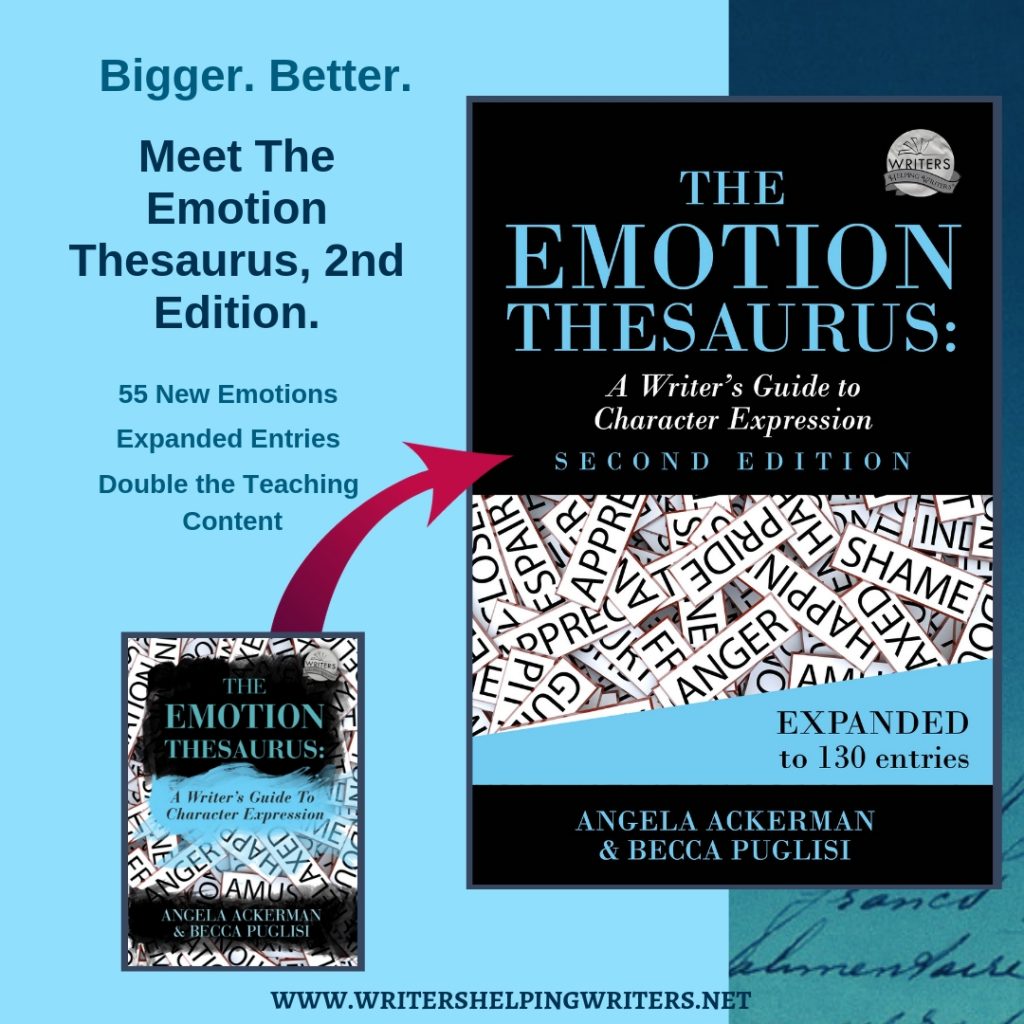
So today I’m sharing some news: authors Angela Ackerman and Becca Puglisi have released a second edition of The Emotion Thesaurus: A Writer’s Guide to Character Expression! You may have heard of this book, or even own a copy, but it’s quite possible that you didn’t realize it had a second edition. Up until a month ago, I didn’t either! It was all kept a secret by the authors who were determined to “show, not tell” their next new book through a mystery reveal. I
This second edition is more than a new cover. It’s been been enhanced and expanded to include 55 new entries and double the teaching material. Now we can go even deeper when showing our characters’ emotions!
Anyway, if you want to look into it further, you can read some of the reviews on Goodreads or find more information here. Also, one more thing I want to share…a MEGA-OPPORTUNITY to win something amazing!
GIVEAWAY ALERT:
To celebrate the new book & its dedicated readers, Angela and Becca have an unbelievable giveaway on right now: one person will win a free writing retreat, conference, workshop, or professional membership to a writing organization, winner’s choice (up to $500 US, with some other conditions which are listed on the WHW site). What conference would you attend if the fee was already paid for…or would you choose a retreat? Something else? Decisions, decisions! This giveaway ends on February 26th, so hurry over and enter!
Preorder Alert!
This book is available for preorder, so you can find all the details about this new book’s contents by visiting Amazon, Kobo, Apple iBooks, and Indiebound or swinging by Writers Helping Writers. You can view the full list of emotions included in this new book, too.
One last thing…Angela & Becca have a special gift for writers HERE. If you like free education, stop by and check it out. (It’s only available for a limited time!)
I recently purchased a program called KDROI. Once installed, it makes it easy for you to submit a Kindle book to as many as 16 sites that promote ebooks, with just a few clicks and a few words to type. (Of course there are no guarantees that every site will agree to feature the book; it just submits the book to them quickly and easily.) Once I purchased it, I decided to use it to help out other authors, as well as to submit my own books.
I’m not trying to make lots of money off of this service (though I certainly won’t complain if I can make back the purchase price! 🙂 ). Mainly, I’m just trying to bless some fellow authors as so many people have blessed and helped me along my publishing journey. So, I’ve chosen not to charge as much as some of my author friends suggested. I want this service to be accessible to those on even the lowest budgets. Hence, the prices that I hope you’ll consider very reasonable: $1.99 or $2.99, depending on the details (more information below).
For those who are curious, the following screenshots show how the program actually works, using my book The Collar and the Cavvarach as an example.
To begin with, I go to the book’s page on Amazon, then I activate the program. This is the first screen I see (it fills in most of the details automatically, so I just have to check that they’re correct then fill in a couple of blanks):
After that, it’s a simple matter to click “Submit Promotion” and wait a few seconds while the form is sent out. For the last step, the program shows a log report of how many sites the book information was successfully sent to, and how many sites “failed”. (Failure can be due to a number of issues; I list some of them in my form at the bottom.) There’s a pretty high success rate, though, as you see in this record of 4 different books I submitted for other authors. (The Collar and the Cavvarach isn’t listed here because I didn’t finish submitting it. I actually had already scheduled a promo for a couple weeks from now and had sent requests to many of the same sites manually before I bought KDROI. So I just used it as an example in the first part of the program’s form.)
When I click on the blue links, it tells me which sites experienced the “failure”. After I submitted Heartsick for a free promo and saw that it didn’t work with two sites, I tried the form again, selecting only those two this time. I thought it was worth trying to see if it would go through to them the second time, but as you can see, it didn’t. Oh, well. 30 out of 32* isn’t bad! (The other books in the list were all 99 cent promos, so there were only 18 possible sites they could be sent to.)
Update: I’ve heard back from a couple authors whose books I’ve submitted, and they’ve said that some of the sites where the submission “failed” actually confirmed receiving their book information. So, apparently book submissions that have supposedly failed actually do go through, at least some of the time.
If I submit your book through this service, I’ll send you a confirmation email to let you know when I’ve done it. In addition, you will receive confirmation emails from a number of the sites, some of which contain links you’ll need to click on to finalize your book submission.
Anyway, that’s how KDROI works. Fairly quick and simple for me to use, which is why I can afford to offer book submission services at such a low rate! Any questions? Feel free to mention them in the comments below this post, or email me at AnnieDouglassLima (at) gmail (dot) com.
Final Clarification:
For $2.99, tell me the next set of dates in which your book will temporarily be free, and I will submit it to all 16 book promotion sites on the list. The sites may or may not all decide to feature the book, but it will be submitted to them.
Or, for $1.99, tell me the next set of dates in which your book will temporarily be 99 cents (if it’s permanently 99 cents, that’s fine too; just pick some dates when you want it featured) and I will submit it to the 9 sites that accept 99 cent books. They may or may not all decide to feature the book, but it will be submitted to them.
Or, for $1.99, tell me the next set of dates in which you would like your permafree book to be featured, and I will submit it to the 10 sites that accept permafree books. They may or may not all decide to feature the book, but it will be submitted to them.
Another option: instead of paying the fees mentioned above through PayPal, you could buy one of my books instead. 🙂 Most of the ebooks are $2.99 or less; feel free to pick any one of them at any price (as long as it’s not free at the time) and either download it for yourself or “gift” it to a friend. (I emailed Amazon to make sure this doesn’t violate their terms of service, and they assured me it’s fine.) If you choose this option, simply send me a screenshot that shows what you bought, or forward me the confirmation email from Amazon, and ignore the PayPal link on my form.
Sorry, but I won’t submit erotica or books promoting religions other than Christianity. Don’t take it personally if that’s what you write. We can still be friends! 🙂 But I can’t in good conscience help to promote those books.
So. Are you interested? You could spend nearly $50 and buy the program yourself (you should definitely do that if it’s worth it to you), or you could fill out the form at this link and let me submit your book to those sites for you for about the cost of a cup of coffee.




